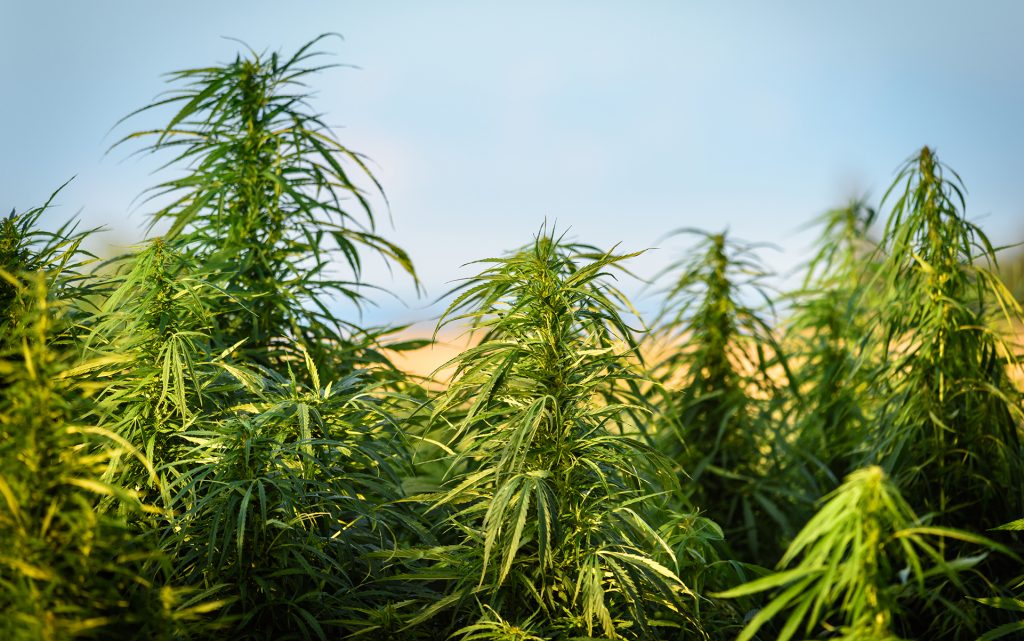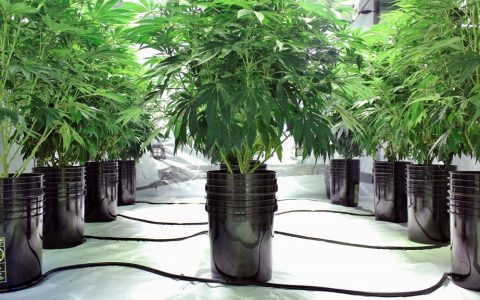Whether your garden is big or small, outdoors or indoors, training your cannabis plants will greatly increase the quality and yield of your grow. Techniques are divided into two categories: LST (low stress training) and HST (high stress training). LST does not involve directly damaging your plant, while HST involves breaking or removing parts of the plant.
The goal of these training techniques is to alter the chemical balances in the plants. If left to grow naturally, cannabis will choose to produce one main cola (the topmost bud) that will reach as high as it can, but this is not optimal for yield and quality. In an indoor garden, you can only bring the light as close as the top cola allows. Buds found lower down on the plant receive less light. Training your plants properly, however, will allow for more even canopies.
A cannabis plant’s growth is dictated by a plant hormone called auxin. In cannabis plants, auxin is highly concentrated at the top of the plant, which prompts the plant to focus most of its growth upwards through the main stalk. Training techniques are used to reduce this focused upward growth and encourage the growth of a level canopy with an increased number of colas.
Here, we’ll show you how to train cannabis plants using these two types of methods.
Low Stress Training (LST) Methods

LST generally requires more time and effort, but will significantly improve your cannabis crop. A common training technique for indoor grows, LST can be used on plants in either vegetative or flowering stages. There are two types of low stress training methods to know about, low stress training and sea of green.
LST (Low Stress Training)
This method shares its name with the style of training, which can be confusing when first learning training techniques. The LST method involves bending the plant as it grows, tying branches down that are becoming too long. When the top of the plant is pulled downward in a loose ‘L’ shape, auxin is distributed more evenly in the plant. As the plant grows, continue to tie down the top, resulting in more of the hormone auxin being distributed.
To tie down the plant, you can use green plant tape which can stretch to prevent the plant from being choked off. The end goal is to have the stalks of the plant snake around the pot, exposing a large number of bud sites at a level height. Once the plant enters its flowering stage, the colas will then sprout upwards from the sideways plant and produce an even level of healthy colas.
SOG (Sea of Green)
Similar to LST, the sea of green (SOG) method involves using a screen to create a canopy. Instead of tying the plant down, you wait for the plant to grow through the screen. Once the branches begin to make their way through, you simply tuck the branches back down into the screen, essentially weaving the branches around it. When it comes time to flower, you will have a well-supported garden that will produce more even colas.
High Stress Training (HST) Methods

These HST methods are much more useful for large outdoor gardens than LST methods, and they generally require less time and materials. Although HST should primarily be done in the vegetative state, “super cropping” can be done early on in flowering, but stressing your plants during flowering is not recommended.
Topping
Topping is a simple HST method and requires no tools besides your fingernails. The goal is to remove the top of the plant, which will result in the top buds turning into two new branches. Additionally, it sends a shock to the rest of the plant that promotes growth in the lower branches.
This process can easily be repeated multiple times as the plant grows in its vegetative state. It will produce a well-rounded, healthy plant with numerous colas.
FIM (“Fuck I Missed”)
A more complicated version topping, FIM involves removing a very specific amount of the top portion of the plant. By scoping out only the topmost region of the new growth, the goal is to produce four off-shooting branches instead of two. Because of the complexity, this method takes significantly more time. It also puts your plant at greater risk of infection because you’re no longer making a clean cut on the stalk of the plant.
Super Cropping/Stem Mutilation
Stem mutilation is a more aggressive version of LST. Instead of tying down the top of the plant, you’re bending the branch until the fibers break and it folds over. The goal is to not snap the branch or even tear the skin of the stalk. You simply want it to kink and bend over.
To best do this, find the location you wish to break the branch and begin to roll and squeeze the stem. You will able to feel it weaken and break down, and it will eventually be able to fall over. This method will give the rest of the plant more exposure to light and time to catch up to this top stalk.
What other tips do you have for cannabis growers looking to increase yield and potency? Leave your best advice in the comments section below!


